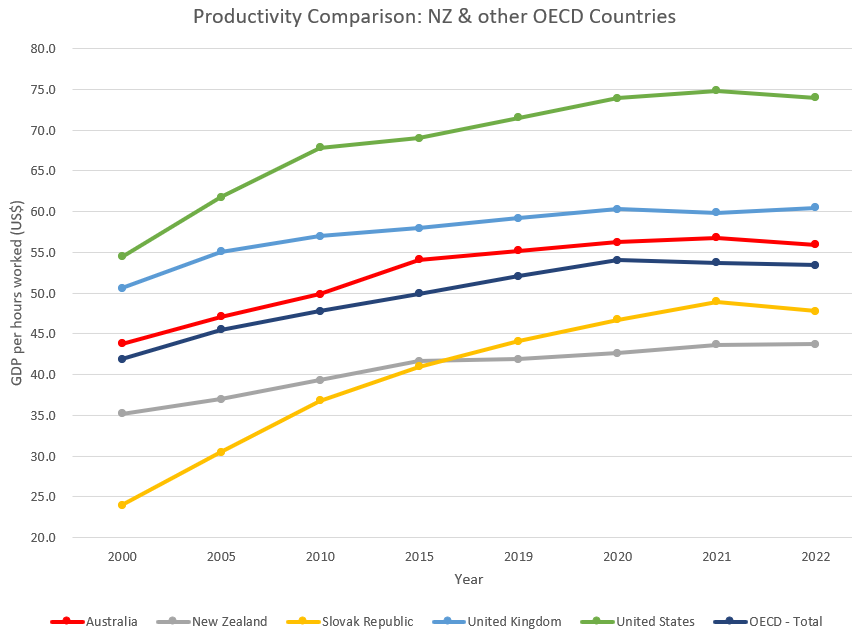Capability building for productivity: NZ’s missing link

Organisational success means better commercial outcomes for firms and better social outcomes for public sector agencies and not-for-profits. To achieve those better outcomes, our people need to be focused on efficiency, effectiveness, and innovation. This blog explores the importance of capability building for productivity.
Productivity Commission
When Managers talk about productivity, staff and unions brace for the implication that staff are not working hard enough. In fact, output per hour worked is a factor of the investment made in people and in the tools, technology, and processes that make them productive.
In the 1950s, when NZ’s productivity levels were 125% that of the OECD average, there was easier access to capital, capability, and a closed market. We know capital intensity is a problem in our firms – we invest less capital relative to labour. If wages are low, firms have little motive to invest in capital that would make workers more productive. Currently, people are under-utilised, and good people are driven away.
Some organisations see staff as costs, not as contributors of value. When making cuts, staff can be the first to go. Not only does replacing staff cost between 50-400% of the employee’s salary, but it also leaves the organisation without the necessary capability to achieve success. There are ways to examine the way people work to reduce inefficiency and increase value to customers while also making work more fulfilling.
The connection between employee well-being and productivity
In a 2019 meta-analysis of 339 independent studies, from 230 independent organisations, across 49 industries in 73 countries, London School of Economics (LSE) researchers found a direct relationship between employee well-being, productivity and firm performance across all industries and regions. When people are in a state of well-being at work, they are able to be more productive and develop their potential more fully.
An earlier study at the Victoria University of Wellington found similar connections. The link between personal capability and productivity is a factor of the means to achieve (skills & a range of personal, environmental and social factors) plus the freedom to achieve (work culture).
How capability shapes productivity
What happens internally matters. If we want to increase productivity, we need to invest in people. This then drives investment in technology and innovation. Seeing and treating staff as individuals of value redirects the effort and cost of hiring replacements to capability building.
A positive, supportive culture drives people to collaborate and innovate. It’s good for their productivity and wellbeing. Create a culture that sets staff up to succeed. Invest in ongoing training and education. Embed members of your team in consulting teams driving change as that experience and exposure to experts will build lasting capability.
Building capability offers tangible business benefits and can drive business performance. It helps organisations find and focus on present opportunities. Capabilities empower workers and increase their confidence to present innovative approaches.
A happier, more capable workforce is more productive. Include capability building into your workplace framework. Set your staff up to succeed. Provide better commercial or social outcomes and achieve organisational success. Increase capability building for increased productivity.
Rich Downey, Consultant, Hague Consulting Ltd. © Hague Consulting Ltd 2023.
Share this on social media
